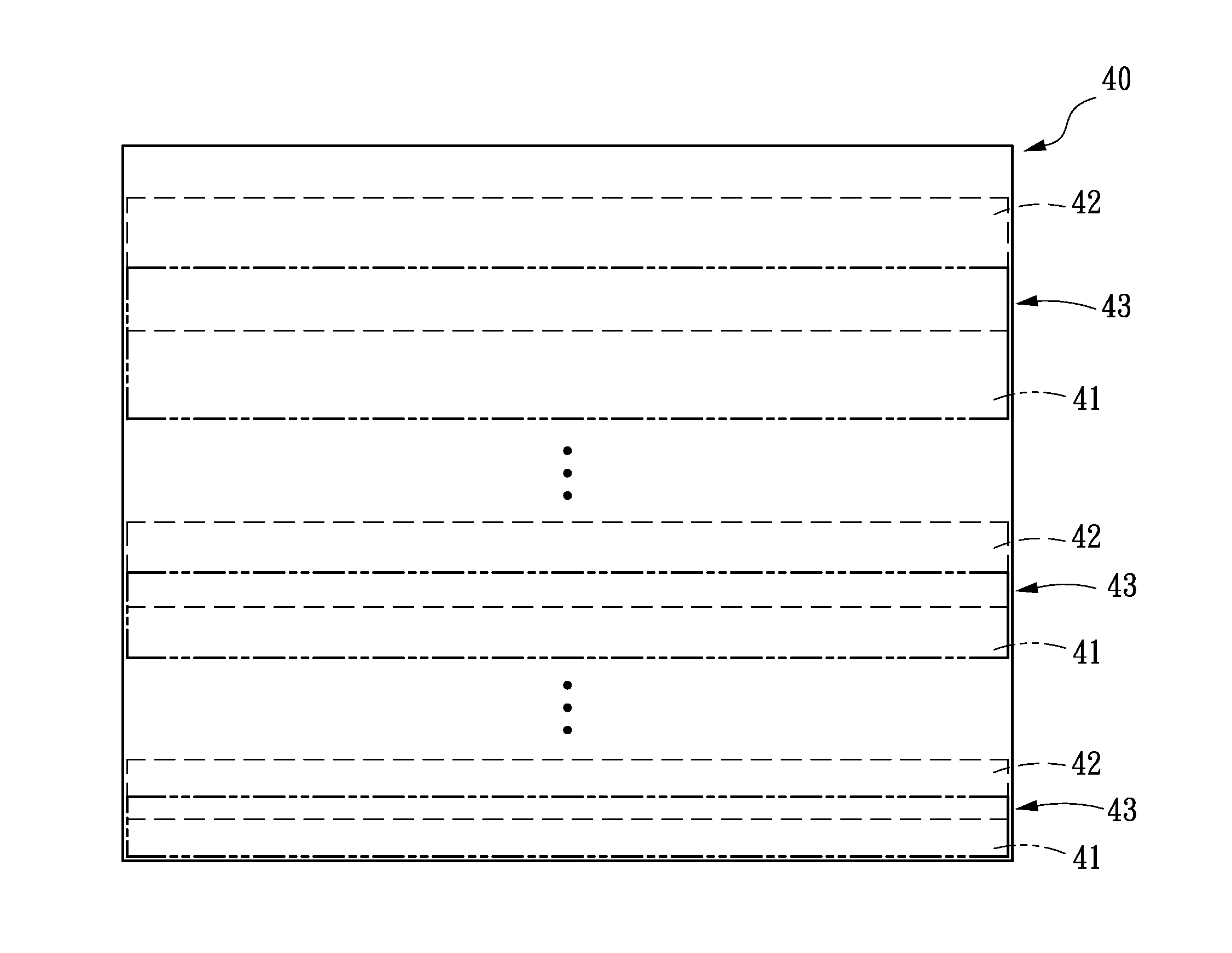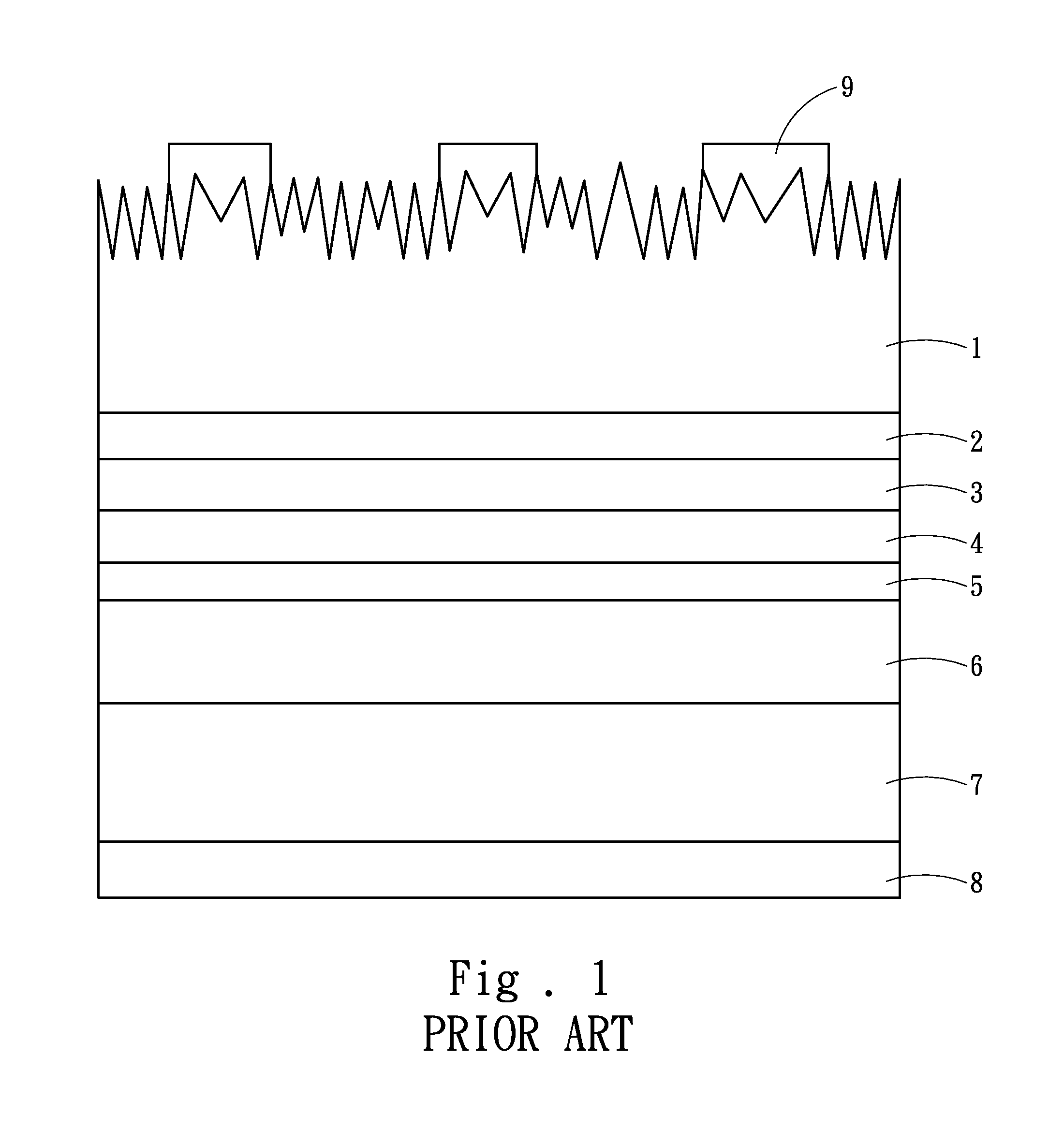Buffer layer structure for light-emitting diode
a buffer layer and diode technology, applied in the field of light-emitting diodes, can solve the problems of single layer defects becoming channels for ion migration, undetectable light-emitting efficiency, and degrading so as to effectively block ion diffusion and enhance light-emitting efficiency of led
- Summary
- Abstract
- Description
- Claims
- Application Information
AI Technical Summary
Benefits of technology
Problems solved by technology
Method used
Image
Examples
Embodiment Construction
[0019]FIG. 3 shows a schematic diagram of a buffer layer structure for a light-emitting diode (LED) according to an embodiment of the present invention. The buffer layer structure is applied to an LED 100. The LED 100 comprises a
[0020]P-type electrode 10, a permanent substrate 20, a binding layer 30, a buffer layer 40, a mirror layer 50, a P-type semiconductor layer 60, a light-emitting layer 70, an N-type semiconductor layer 80, and an N-type electrode 90 that are stacked in sequence.
[0021]Referring to FIG. 4, the buffer layer 40 of the present invention is a composite material, which includes at least two materials. More specifically, the buffer layer 40 comprises at least one first material 41 and at least one second material 42 that are alternately stacked. One first material 41 and one second material 42 are jointed to become a group 43, and a total thickness of one first material 41 and one second material 42 is regarded as a group thickness (i.e., the thickness of the group 4...
PUM
 Login to View More
Login to View More Abstract
Description
Claims
Application Information
 Login to View More
Login to View More - R&D
- Intellectual Property
- Life Sciences
- Materials
- Tech Scout
- Unparalleled Data Quality
- Higher Quality Content
- 60% Fewer Hallucinations
Browse by: Latest US Patents, China's latest patents, Technical Efficacy Thesaurus, Application Domain, Technology Topic, Popular Technical Reports.
© 2025 PatSnap. All rights reserved.Legal|Privacy policy|Modern Slavery Act Transparency Statement|Sitemap|About US| Contact US: help@patsnap.com



